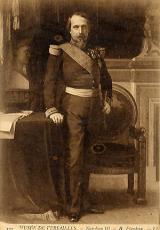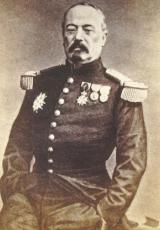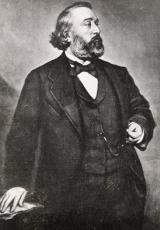The Battle of Saint-Privat

The Franco-Prussian War, 1870-71
In July 1870, the Spanish crown was given to a Prussian prince, Leopold of Hohenzollern. France feared the resurrection of Charles V’s Holy Roman Empire. After a month of intense diplomacy, Chancellor Bismarck issued the Ems Dispatch, which offended the French government. France declared war on Prussia on 19 July. The armies went straight into battle. A totally improvised French army suffered defeat after defeat: on 6 August at Forbach and Froeschwiller, 14 to 18 August in the Metz area, 1 September at Sedan. Within one month, the imperial army was in tatters and Emperor Napoleon III had been taken prisoner.
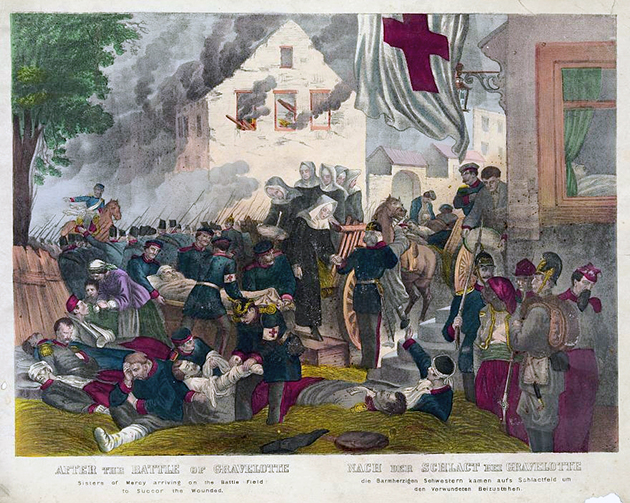
AFTER THE BATTLE OF GRAVELOTTE: Sisters of Mercy Arriving on the Battle Field to Succor the Wounded Source: Library of Congress
On 4 September, in Paris, a Republic was proclaimed. The whole of France was overrun, and Paris besieged. Marshal Bazaine surrendered at Metz on 27 October. He handed over 173 000 men, 3 marshals, 50 generals, 53 flags and 1 400 cannons. Gambetta left Paris by balloon. He organised a defensive force in the provinces. Verdun, Belfort and Strasbourg were besieged. Fighting broke out in Nord, Beauce, the Loire, Burgundy and the Jura. On 18 January 1871, at Versailles, Wilhelm I was proclaimed German Emperor. On 28 January, France signed an armistice and, on 10 May, a peace treaty. France lost Alsace and Lorraine. It paid five billion francs. It was not until August and September 1873 that the four departments in eastern France that were still occupied were evacuated and Verdun was handed back to France.
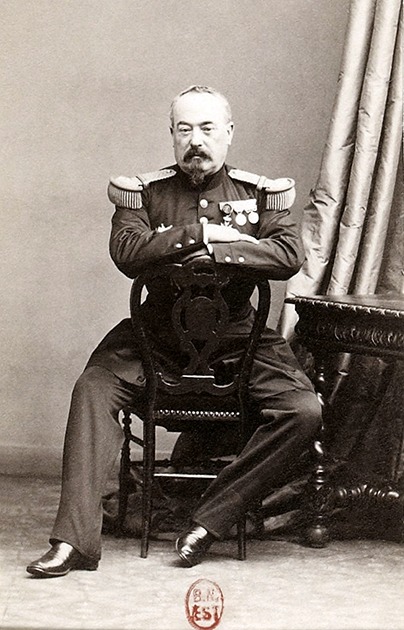
François Achille Bazaine (1811-1888), André Disdéri. Source: Bibliothèque nationale de France
The battle of August 18th, 1870
Assembled below Metz, Marshal Bazaine’s Army of the Rhine prepared to join that of Marshal MacMahon to combat the invasion of northeast France. But the manoeuvre was thwarted by the Prussian armies, which engaged a number of successive battles to close the road to Verdun. On the outskirts of Metz, the French fought at Borny on 14 August, then at Rezonville on the 16th.
On 18 August 1870, Marshal Bazaine’s troops clashed with Prince Friedrich Karl of Prussia’s army at Gravelotte, in a bloody melee. 125 000 French faced 285 000 Germans. The goal of the battle was the Saint-Privat hilltop, defended by Marshal Canrobert’s VI Corps.
In late afternoon, in order to break through the French right flank, Prince August of Württemberg, commanding the Royal Prussian Guard, ordered them to seize the village.
At 5 pm, the Prussian Guard attacked, flags unfurled, drums beating, officers in front. The French opened fire and, within half an hour, the Guard had lost 240 officers and 6 500 men on the slopes of Saint-Privat.
Around 7 pm, the infantrymen of the XII (Royal Saxon) Corps attempted to attack, but they were driven back by the 75th and 91st Line Infantry Regiments.
The final onslaught came in the evening. The artillery flattened the village. Fire raged. The Prussian Guard and the Saxons flung themselves into the attack. The survivors of the 28th Line Infantry Regiment fought them every inch of the way, over the cemetery and every single house. Then the Saxon general, von Craushaar, was killed. The defenders were overcome by numbers.
By the time the battle was over, approximately 12 000 French and 20 000 Germans lay dead or wounded on the battlefield.
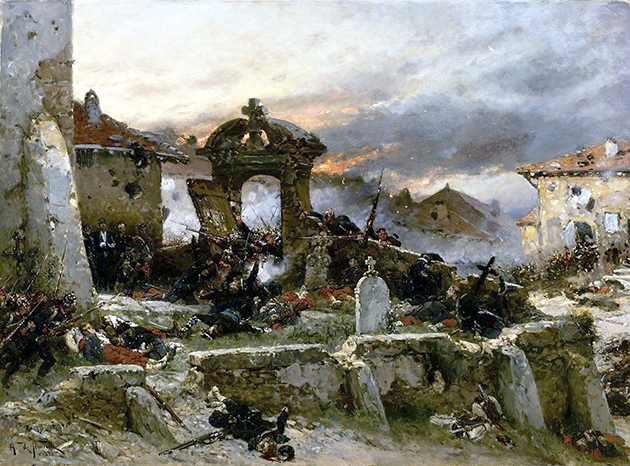
Battle of Saint-Privat (18 August 1870), Alphonse de Neuville, 1881 (preliminary sketch before the final painting).
The battlefield
The day after the battle, 19 August, King Wilhelm I of Prussia rode across the battlefield, still strewn with the dead and wounded from the day before. Already, fatigue parties were digging graves in which to bury the dead. Following the custom of the day, to prevent epidemics the bodies of the dead soldiers were rapidly assembled in a number of ossuaries. For convenience, the bodies were not even stripped of their equipment. When they came to be exhumed, many items of equipment - buttons, belt buckles, leathers - were found on the slopes of Saint-Privat.
The site made a strong impression on the Prussian king, who named it “the tomb of my Guard”. Later, when peace was restored, he expressed the desire that the communes of Saint-Privat and Sainte-Marie-aux-Chênes, given to France under the Treaty of Frankfurt, signed on 10 May 1871, should remain part of the German Empire. Their handover was part of a border adjustment in the Belfort area.
Between 1871 and 1900, memorials were erected by both the French and the Germans. Since then, the dead have been honoured at each anniversary of the battle.


